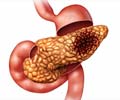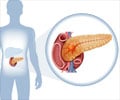The tongue’s taste receptors aids in telling apart between safe food and spoilt food or toxic. Nevertheless taste receptors are now being discovered in other organs, also.

After a meal, beta cells in the pancreas typically respond to the suddenly high levels of glucose, another type of sugar, in the blood by releasing insulin. Insulin then binds to receptors present on many cells in the body. Like a key unlocking a door, insulin binding allows glucose to enter the cell and be used for energy. But most meals are a mix of different types of sugar. This study shows that glucose is not the only sugar that triggers insulin secretion—fructose also plays a role.
Using human and mouse pancreatic cells, Tyrberg, along with postdoctoral researchers George Kyriazis, Ph.D. and Mangala Soundarapandian, Ph.D., found that fructose activates sweet taste receptors on beta cells. Together with glucose, fructose helps amplify insulin release. To substantiate this observation, the team took a look at cells genetically engineered to lack the taste receptor gene. Without the gene, fructose did not stimulate insulin release, underscoring the role beta cell taste receptors play in insulin signaling.
Source-Eurekalert













